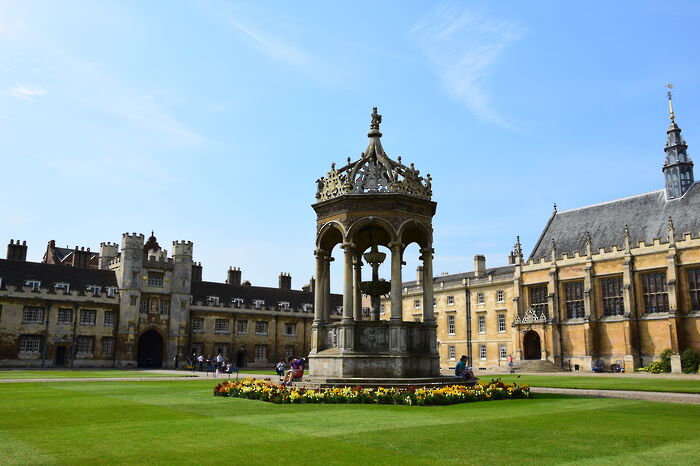University annual income soars with fivefold increase
Stephanie Stacey analyses updates in University financial information recently released in the Reporter

The University’s comprehensive income for the year – the sum of its net income and items unrealised in its income sheet – roughly quintupled this year, the latest Reporter has shown. The figure increased from £66.5 million last year to £331.2 million this year.
This difference is largely due to greater gains on investments (£253.7 million this year up from £116.6 million last year) and significantly smaller actuarial loss; only £1 million as opposed to last year’s £145.2 million which occurred due to pension payments being significantly larger than anticipated.
Despite significant gains in investments, this year also saw the smallest amount of money introduced to the Cambridge University Endowment Fund in the past ten years. A total of approximately £1.7 million was added to the almost £3 billion pound fund. The fund consists of a variety of its equities and investment property that investors can purchase units from.
Other sources of income include grants, donations and tuition fees. In the past year the greatest source of income was research grants, which contributed £466 million, more than a third of the total. Meanwhile, the greatest expenditure was staffing costs.
Despite mounting pressure from students and academics for the University to divest, fossil fuel companies continue to be a significant source of funding for the University, both through endowments and research grants.
BP, in particular, made 18 contributions to research grants, and was one of the top five companies which made the largest numbers of research contributions, alongside Rolls Royce (100), GlaxoSmithKline (42), Medimmune (38), AstraZeneca (37).
While BP awarded fewer grants this year than the previous year, when it gave 31, their input still represents a significant contribution to the University’s research funds.
While most research grants were awarded by research councils or charitable bodies, members of the University received £20.2 million from UK-based businesses in 556 separate grants.
The University’s expenditure increased from £1,734 million last year to £1,807 million this year.
One notable difference was that in 2016-17 the University paid aggregate payments for compensation to two members of staff earning more than £100,000 at a total cost of £250,000. However, no such payments were made in the previous year.
Meanwhile, expenses varied dramatically across different academic departments, with science and technology considerably more expensive than other subjects. The University spent £221.5 million on the School of Clinical Medicine alone, while the School of Arts and Humanities received less than a fifth of this sum. This is, predictably, due mainly to the larger costs accrued through the need for complex equipment in order to perform experiments and the relative sizes of the schools.
While most departments had reasonably consistent costs across the past two years, the total costs for the School of the Humanities and Social Sciences almost doubled, increasing from £871,000 to £1.6 million. Generally departmental costs increase slightly each year along with inflation; however, the Institute of Astronomy’s costs went down by £2 million, representing a decrease of over 20%.
Correction, 22/2/18: The rise in expenditure of the School of Humanities and Social Sciences from £871,000 to £1.6 million last year was incorrectly attributed to the Centre for African Studies. The Centre’s costs in fact decreased from £121,000 in 2015-16 to £98,000 in 2016-17.
 Features / Should I stay or should I go? Cambridge students and alumni reflect on how their memories stay with them15 December 2025
Features / Should I stay or should I go? Cambridge students and alumni reflect on how their memories stay with them15 December 2025 News / Cambridge study finds students learn better with notes than AI13 December 2025
News / Cambridge study finds students learn better with notes than AI13 December 2025 Comment / The magic of an eight-week term15 December 2025
Comment / The magic of an eight-week term15 December 2025 News / News In Brief: Michaelmas marriages, monogamous mammals, and messaging manipulation15 December 2025
News / News In Brief: Michaelmas marriages, monogamous mammals, and messaging manipulation15 December 2025 News / Uni Scout and Guide Club affirms trans inclusion 12 December 2025
News / Uni Scout and Guide Club affirms trans inclusion 12 December 2025











